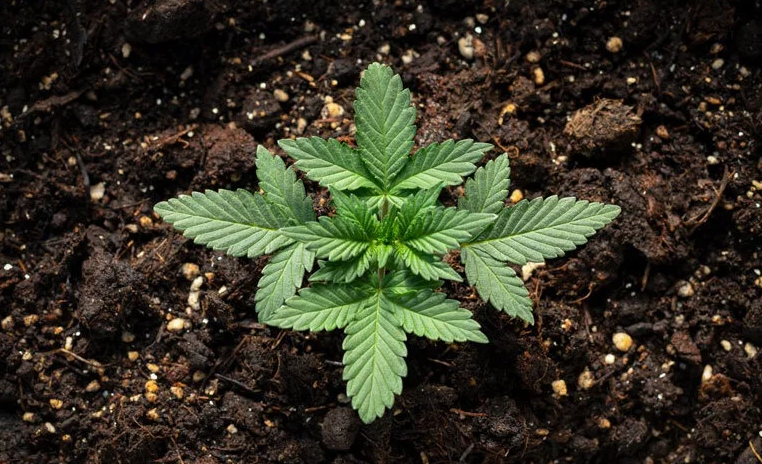Federal Study Reveals Soil Chemistry Significantly Influences Bioactive Compounds in Cannabis
A new federally funded study indicates that the bioactive compounds in cannabis plants are significantly affected by the chemical composition of the soil in which they are grown.
Researchers stated in a recent paper published in the peer-reviewed scientific journal *Journal of Medicinally Active Plants*: “The findings of this study provide outdoor growers with information on how soil health impacts the cannabinoid and terpene content in cannabis. Poorer soil quality appears to result in higher THC content, while higher soil quality may lead to increased levels of the precursor cannabinoid CBG.”
This discovery suggests that growers might be able to fine-tune crop cannabinoid levels not only through genetics but also via soil conditions and management.
The study was led by the U.S. Department of Agriculture (USDA) National Institute of Food and Agriculture and co-funded by the Penn State College of Medicine and the state-licensed medical cannabis company PA Options for Wellness.
The researchers aimed to compare two cannabis cultivars, ‘Tangerine’ and ‘CBD Stem Cell’, grown in cover crop (CC) and conventional tillage (CF) fields, respectively. The study authors wrote: “This research specifically focused on the soil health tillage aspect, attempting to compare these two field types. The two cannabis cultivars were planted in two adjacent fields: one a conventional field with tilled soil, and the other a no-till field.”
“By comparing the extracts of two different cannabis cultivars grown in CC and CF soils, the study found significant differences in the concentrations of specific cannabinoids and terpenes.”
The cannabidiol (CBD) content in the ‘Tangerine’ cultivar grown in conventional soil was about 1.5 times higher than that in the ‘CBD Stem Cell’ cultivar grown in cover crop soil; however, the opposite was true for the ‘CBD Stem Cell’ cultivar – its CBD content doubled in the cover crop field. Furthermore, in the cover crop field, the precursor cannabinoid CBG content was 3.7 times higher, while the primary psychoactive compound in cannabis, THC, was 6 times higher in the tilled field.
“In fact, soil health should focus not only on the inorganic properties of the soil but also on its biological characteristics and its ability to support plant life.”
The scientists concluded: “Significant differences in cannabinoid content were observed between field types and cultivars, particularly in cannabidiol (CBD) levels.”
The authors noted that cannabidiolic acid (CBDA) levels were over six times higher in cannabis grown using conventional tillage methods. The paper stated: “In the CC extract of the ‘Tangerine’ cultivar, CBD content was 2.2 times higher than in the CF extract of the ‘CBD Stem Cell’ cultivar; in the CC extract of the ‘CBD Stem Cell’ cultivar, cannabigerol (CBG) content was 3.7 times higher; and in the CF extract of the ‘Tangerine’ cultivar, Δ9-tetrahydrocannabinol (THC) content was 6 times higher.”
Soil health essentially refers to the environment for plant growth. The organisms in the soil can directly influence the production of cannabinoids and terpenes that plants use for defense, communication, and competition.
Soil itself is an ecosystem composed of microorganisms, fungi, minerals, and organic matter, which provide nutrients to and communicate with plant roots. Practices such as cover cropping and no-till farming are well-known to enhance this biological network and improve carbon retention and nutrient cycling. This new study adds the resulting plant’s chemical composition to the list of factors potentially influenced by soil.
Therefore, despite inherent genetic differences between cannabis cultivars, cover crop fields may help reduce variations in terpene content. These results further suggest an important interaction between the genetics of cannabis cultivars and their influence on soil nutrient uptake…
Simultaneously, the authors cautioned that more research is needed to determine the “levels of enzymes responsible for converting CBG into CBD, THC, and CBC,” which could provide clues as to why CBG levels are higher in cover crop fields.
The authors observed: “When discussing the biosynthesis of these compounds, the study describes shared precursors between cannabinoids and terpenoids, as well as evidence of genetic variation in the specific enzyme synthases for individual cannabinoids and terpenoids.”
The paper noted: “This is the first study on the differences in the composition of outdoor cannabis extracts grown under different soil conditions.”
This trend comes as attention increasingly focuses on best practices for cannabis cultivation. Earlier this year, an industrial hemp grower suggested that expanding South Dakota’s hemp supply chain would attract more small-scale processing and manufacturing businesses to the state and could effectively sequester the greenhouse gas carbon dioxide from the atmosphere.
Currently, scientists are conducting more research to explore various remarkable cannabis compounds. For instance, researchers have, for the first time, conducted a comprehensive sensory-guided study of odor-active compounds in dried cannabis flowers, discovering dozens of previously unknown chemicals that constitute the plant’s unique aroma. These new findings expand the scientific understanding of the cannabis plant beyond the common knowledge of terpenes, CBD, and THC.
According to two recently published white papers, one study shows that how cannabis is processed post-harvest – specifically, how it is dried before packaging – significantly impacts product quality, including the preservation of terpenes and trichomes.
Post time: Oct-10-2025




